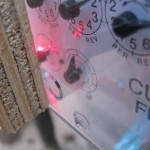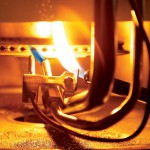 Ever wonder how efficient it is to heat water? Of course you have! Ever measured it? Whoa, mister, now you’ve gone too far!
Ever wonder how efficient it is to heat water? Of course you have! Ever measured it? Whoa, mister, now you’ve gone too far!
I recently devised a laser-phototransistor gauge to monitor my natural gas meter dial—like ya do. As a side benefit, I acquired good data on how much energy goes into various domestic uses of natural gas. Using this, I was able to figure out how much energy it takes to heat water on the stove, cook something in the oven, or heat water for a shower. Together with the knowledge of the heat capacity of water, I can compute heating efficiency from my measurements. What could be more fun? I’ll share the results here, some of which surprised me.
Views: 28311



